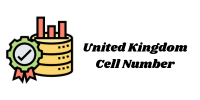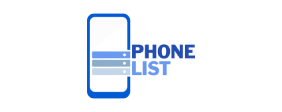Most of the attributes given to our example profiles above were positive, but your campaign needs to find some negativity as well.
As an example, let‘s look back to Athletic Andy. He’s a conscious consumer who cares about the environment, which is positive — but I also know for a fact that Andy hates greenwashing.
Greenwashing is a type of misleading marketing where companies try to portray themselves as being more environmentally friendly than they really are. In a targeted campaign, you could speak to this negative emotion that Andy has by explicitly saying, “No greenwashing here — look for yourself.”
Drill down to the underlying fear.
Donald Miller, founder of StoryBrand, has said on his podcasts that fear in marketing is a lot like salt in baking — it shouldn’t be the predominant flavor, but every recipe should have a little.
In order to speak to your oman telegram data audience‘s fears, you need to understand them. If I look at Nervous Natalie, I know that she’s afraid of being inexperienced. As a reaction to this, she’s researching heavily to feel empowered and prepared.
One of Nervous Natalie‘s biggest concerns is finding the best way to walk her Camino de Santiago. Rather than telling her what time of the year I think is best, I’ve gathered the data to empower her to make a decision for herself.
I chose the metrics that are most important (precipration, temperature, number of pilgrims, and daylight hours). I then organized them in a guide called the Best Time To Walk The Portuguese Camino? [Data + Tips].
I could’ve just told Nervous Natalie that I think spring is the ideal time to walk, but then she wouldn’t have empowered her to feel like she can overcome her fears.
Use their lingo.
A single story can be told to ten groups of people using ten completely different sets of vocabulary. Marketers need to pick the right vocab — tailoring the copy to obvious factors like location and generation, as well as sneaky factors like individual platforms.
Case and point: When I open up TikTok, I feel like people are speaking a different language. Creators on the platform speak and act in a way that’s different from Instagram or Facebook reels.
Before investing your time, you need to do some audience analysis to make sure you’re speaking the same language as them. This leads directly to the next best practice: testing.
Consider a focus group.
The worst-case scenario for your profile is that it gets your audience wrong. The only solution? Asking.
A focus group is ideal, but if an why is a good specialist = a rich specialist? entire focus group is too big of a task for your campaign, then run it by a few individuals. If you‘re like me, you’ll be surprised by the feedback you get.
I wrote an article for my new united states of america email lead niche site on senior pilgrims walking the Portuguese Camino. My mom matches the profile, so I asked her to read it. I didn’t anticipate her feedback! She negatively reacted to the term “older pilgrim,” clearly favoring the term “senior” or “retiree.” I thought “older” was a polite term, but thank goodness I asked. A focus group survey would tell me how widespread this is.

